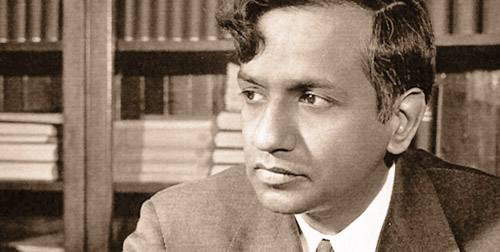
The following is a review of Jon Ronson’s The Men Who Stare at Goats (Picador/Pan Macmillan, 2004, ISBN 0330375474), which appeared in The Bulletin of the Atomic Scientists, May/June 2005.
The Pentagon’s Psychic Friend’s Network
a book review by Michael Shermer
Allison was an attractive Oregonian brunette in a new ageish way, before the new age bloomed in the 1980s. She wore all natural fibers, flowers in her hair, and nothing on her feet. But what most intrigued me in our year of distance dating were Allison’s spiritual gifts. I knew she could see through me metaphorically, but Allison also saw things that she said were not allegorical: body auras, energy chakras, spiritual entities, and light beings. One night she closed the door and turned off the lights in my bathroom and told me to stare into the mirror until my aura appeared. During a drive one evening she pointed out spiritual beings dotting the landscape. I tried to see the world as Allison did, but I couldn’t. I was a skeptic and she was a psychic. The difference doomed our relationship.
This was the age of paranormal proliferation. While a graduate student in experimental psychology, I saw on television the Israeli psychic Uri Geller bend cutlery and reproduce drawings using, so he said, psychic powers alone. Since a number of Ph.D. experimental psychologists had tested Geller and declared him genuine, I began to think that there might be something to it, even if I couldn’t personally get with the paranormal program. But then one night I saw the magician James “The Amazing” Randi on Johnny Carson’s Tonight Show, replicating with magic everything Geller did. Randi bent spoons, duplicated drawings, levitated tables, and even performed a psychic surgery. When asked about Geller’s ability to pass the tests of professional scientists, Randi explained that scientists are not trained to detect trickery and intentional deception, the very art of magic. Randi’s right. I vividly recall a seminar that Allison and I attended in which a psychic healer shoved a 10-inch sail needle through his arm with no apparent pain and only a drop of blood. Years later, and to my chagrin, Randi performed the same feat with the simplest of magic.
Randi confirmed my skeptical intuitions about all this paranormal piffle, but I always assumed that it was the province of the cultural fringes. Then, in 1995, the story broke that for the previous 25 years the U.S. Army had invested $20 million in a highly secret psychic spy program called Star Gate (also Grill Flame and Scanate), a Cold War project intended to close the “psi gap” (the psychic equivalent of the missile gap) between the United States and Soviet Union. The Soviets were training psychic spies, so we would as well. The Men Who Stare at Goats, by British investigative journalist Jon Ronson, is the story of this program, how it started, the bizarre twists and turns it took, and how its legacy carries on today. (Ronson’s previous book, Them: Adventures with Extremists, explored the paranoid world of cult mongers and conspiracy theorists.)
In a highly readable narrative style, Ronson takes readers on a Looking Glass-like tour of what U.S. Psychological Operations (PsyOps) forces were researching: invisibility, levitation, telekinesis, walking through walls, and even killing goats just by staring at them (the ultimate goal was killing enemy soldiers telepathically). In one project, psychic spies attempted to use “remote viewing” to identify the location of missile silos, submarines, POWs, and MIAs from a small room in a run-down Maryland building. If these skills could be honed and combined, perhaps military officials could zap remotely viewed enemy missiles in their silos, or so the thinking went.
Initially, the Star Gate story received broad media attention—including a spot on ABC’s Nightline—and made a few of the psychic spies, such as Ed Dames and Joe McMoneagle, minor celebrities. As regular guests on Art Bell’s pro-paranormal radio talk show, the former spies spun tales that, had they not been documented elsewhere, would have seemed like the ramblings of paranoid cultists. (There is even a connection between Ed Dames, Art Bell, and the Heaven’s Gate cult mass suicide in 1997, in which 39 UFO devotees took a permanent “trip” to the mother ship they believed was trailing the Hale-Bopp comet.)
But Ronson has brought new depth to the account by carefully tracking down leads, revealing connections, and uncovering previously undisclosed stories. For example, Ronson convincingly connects some of the bizarre torture techniques used on prisoners at Guantanamo Bay, Cuba, and Iraq’s Abu Ghraib prison, with similar techniques employed during the FBI siege of the Branch Davidians in Waco, Texas. FBI agents blasted the Branch Davidians all night with such obnoxious sounds as screaming rabbits, crying seagulls, dentist drills, and Nancy Sinatra’s “These Boots Are Made for Walking.” The U.S. military employed the same technique on Iraqi prisoners of war, instead using the theme song from the PBS kids series Barney and Friends—a tune many parents concur does become torturous with repetition.
One of Ronson’s sources, none other than Uri Geller (of bent-spoon fame), led him to one Maj. Gen. Albert Stubblebine III, who directed the psychic spy network from his office in Arlington, Virginia. Stubblebine thought that with enough practice he could learn to walk through walls, a belief encouraged by Lt. Col. Jim Channon, a Vietnam vet whose post-war experiences at such new age meccas as the Esalen Institute in Big Sur, California, led him to found the “first earth battalion” of “warrior monks” and “jedi knights.” These warriors, according to Channon, would transform the nature of war by entering hostile lands with “sparkly eyes,” marching to the mantra of “om,” and presenting the enemy with “automatic hugs.” Disillusioned by the ugly carnage of modern war, Channon envisioned a battalion armory of machines that would produce “discordant sounds” (Nancy and Barney?) and “psycho-electric” guns that would shoot “positive energy” at enemy soldiers.
Although Ronson expresses skepticism throughout his narrative, he avoids the ontological question of whether any of these claims have any basis in reality. That is, can anyone levitate, turn invisible, walk through walls, or remote view a hidden object? Inquiring minds (scientists) want to know. The answer is an unequivocal no. Under controlled conditions remote viewers have never succeeded in finding a hidden target with greater accuracy than random guessing. The occasional successes you hear about are due either to chance or suspect experiment conditions, like when the person who subjectively assesses whether the remote viewer’s narrative description seems to match the target already knows the target location and its characteristics. When both the experimenter and the remote viewer are blinded to the target, all psychic powers vanish.
Herein lies an important lesson that I have learned in many years of paranormal investigations and that Ronson gleaned in researching his illuminating book: What people remember rarely corresponds to what actually happened. Case in point: A man named Guy Savelli told Ronson that he had seen soldiers kill goats by staring at them, and that he himself had also done so. But as the story unfolds we discover that Savelli is recalling, years later, what he remembers about a particular “experiment” with 30 numbered goats. Savelli randomly chose goat number 16 and gave it his best death stare. But he couldn’t concentrate that day, so he quit the experiment, only to be told later that goat number 17 had died. End of story. No autopsy or explanation of the cause of death. No information about how much time had elapsed; the conditions, like temperature, of the room into which the 30 goats had been placed; how long they had been there, and so forth. Since Ronson was skeptical, Savelli triumphantly produced a videotape of another experiment where someone else supposedly stopped the heart of a goat. But the tape showed only a goat whose heart rate dropped from 65 to 55 beats per minute.
That was the extent of the empirical evidence of goat killing, and as someone who has spent decades in the same fruitless pursuit of phantom goats, I conclude that the evidence for the paranormal in general doesn’t get much better than this. They shoot horses, don’t they?

photo: Subrahmanyan Chandrasekhar (Chandra), one of the discoverers of Black Holes, who is featured in Miller’s book and lecture
A Reminder of Upcoming Events…
Empire of the Stars
Obsession, Friendship & Betrayal in the Quest for Black Holes
with Dr. Arthur I. Miller
Sunday, May 1st, 2:00 pm
at the Baxter Lecture Hall, Caltech, Pasadena, CA
Brain, Mind & Consciousness
The Skeptics Society Annual Conference
Friday, Saturday, Sunday, May 13–15
at the Westin Resort & Hotel
and the Beckman Auditorium, Caltech, Pasadena, CA
Letting Go of God
Julia Sweeney
Sunday, May 15th, 3:00–5:30 pm show
Hudson Backstage Theater, Hollywood, CA
followed by dinner at Julia’s home
For more information about these events and lectures,
see www.skeptic.com.









